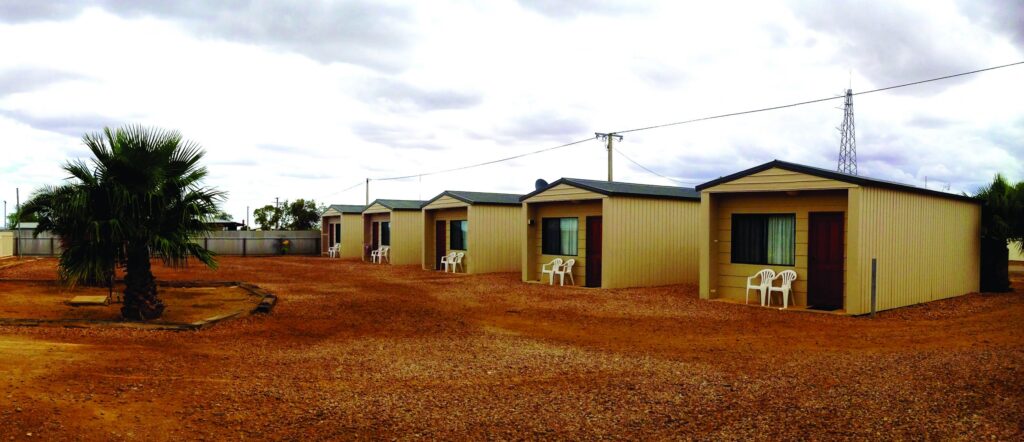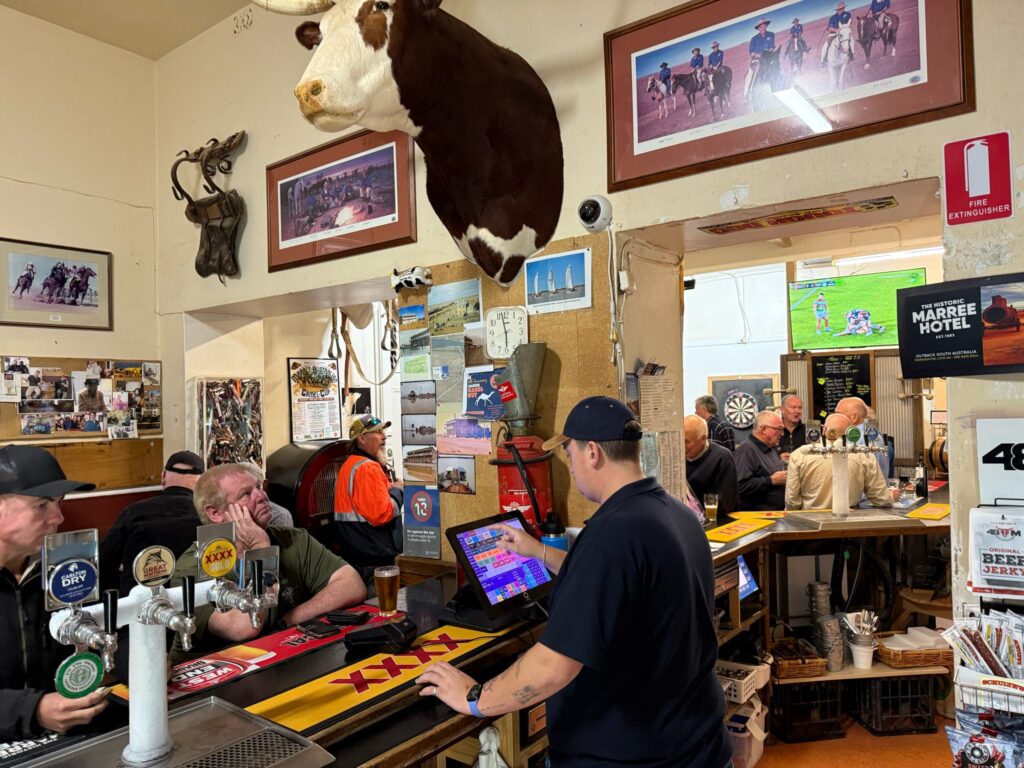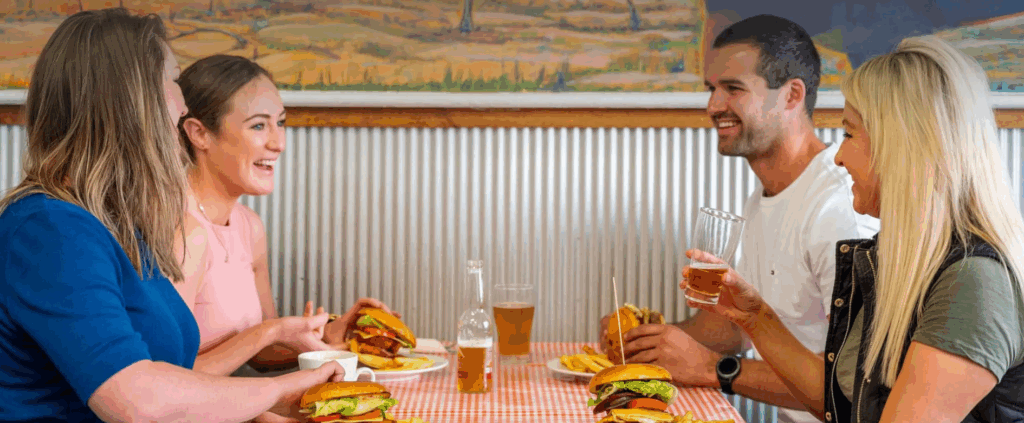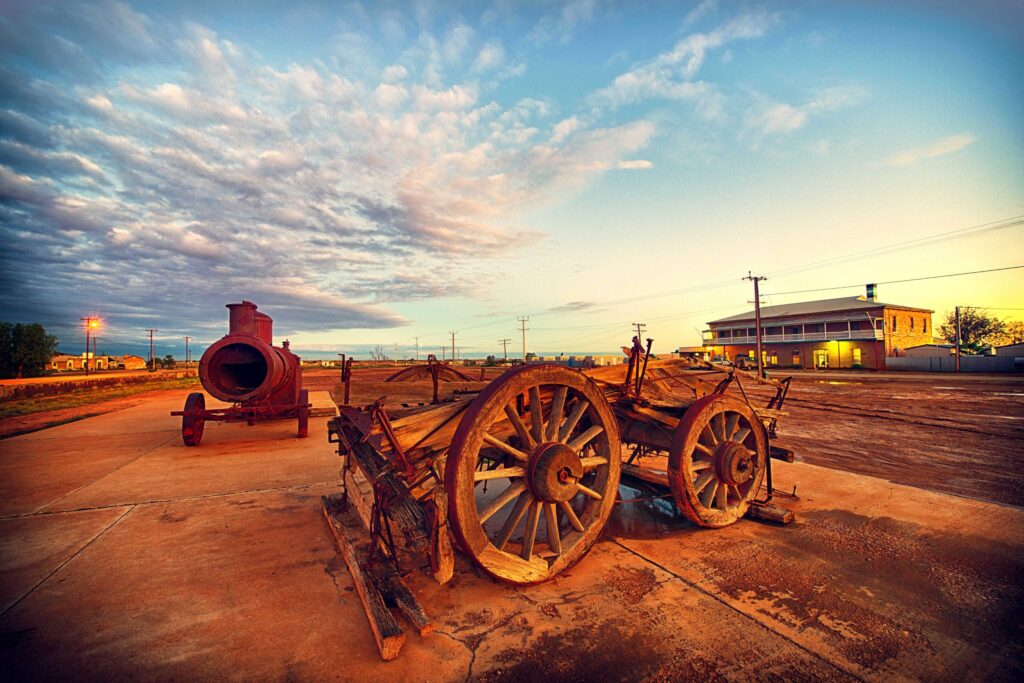
Accommodation
Stay in comfort with our cosy en-suite cabins or hotel rooms – and enjoy a complimentary continental breakfast.

Hospitality
Join us in our beloved pub and restaurant, where outback hospitality meets great food and cold drinks for everyone to enjoy.

Check out our menu
Savour classic pub favourites at the Marree Hotel with a unique outback twist, from hearty meals to local specialties.

“We camped out back and enjoyed a meal in the pub. This place is a hidden gem, facilities clean and well maintained. The staff exceptional, can’t do enough for you. Very dog friendly and fun. Thanks”
Elizabeth Stround, May 2025
Get in touch
Address
Marree Hotel, Lot 200, Railway Terrace
Opening hours
Monday – Sunday: 10am – Late
Contact us
(08) 8675 8344
info@marreehotel.com.au

‘Where the outback tracks meet‘
An iconic stop on the Oodnadatta and Birdsville Tracks. The Marree Hotel is your home for cold beer, hearty meals, and true outback hospitality. And why not combine your stay with a flight over Lake Eyre?
Address
Marree Hotel
Lot 200, Railway Terrace
Marree
South Australia, 5733
Contact
(08) 8675 8344
info@marreehotel.com.au
All rights reserved. © Marree Hotel 2025
